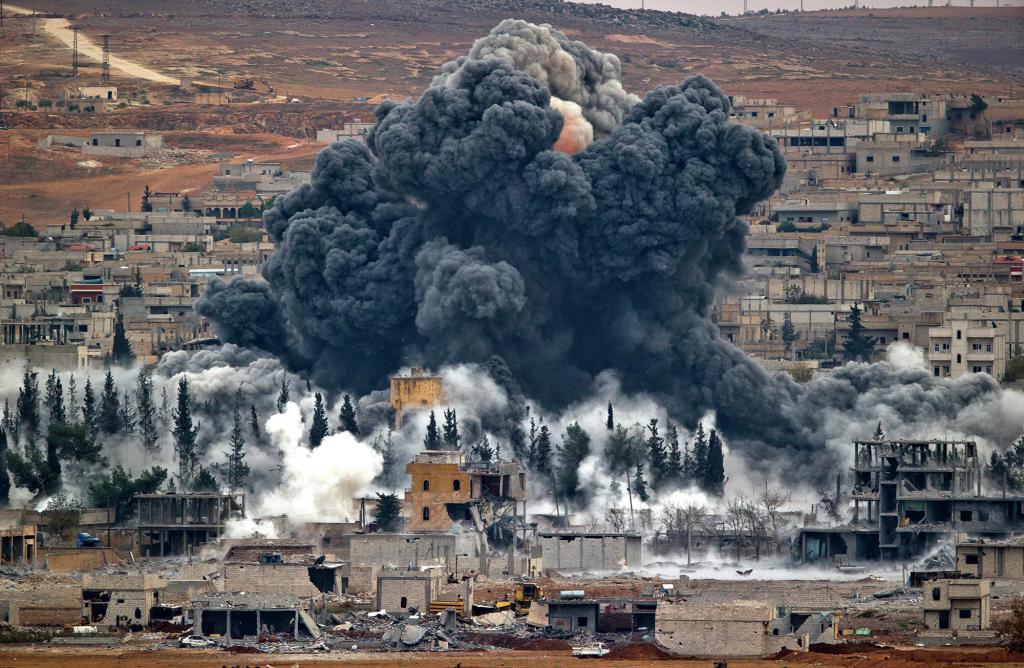By Zion Rufus
This year, a record 97 countries have experienced a decline in peacefulness.
The world is witnessing a dramatic surge in conflict, with 32 countries currently at war, as revealed by the “Countries at War 2024” report by World Population Review. This alarming situation coincides with the latest Global Peace Index (GPI) report from the Institute for Economics & Peace (IEP), highlighting a sharp decline in global stability.
The GPI report indicates that 56 active conflicts are ongoing worldwide, the highest number since World War II. Additionally, 92 countries are involved in conflicts beyond their borders, making this the most internationalized conflict environment since the GPI’s inception in 2008.
Africa is grappling with over 35 non-international armed conflicts (NIACs), spread across nations like Burkina Faso, Cameroon, the Central African Republic (CAR), the Democratic Republic of the Congo, Ethiopia, Mali, Mozambique, Nigeria, Senegal, Somalia, South Sudan, and Sudan. Various armed groups are involved, often clashing with government forces and each other. Western powers and neighboring countries are also intervening in conflicts within Burkina Faso, Mali, Mozambique, Nigeria, and Somalia. CAR is particularly affected, with multiple NIACs involving numerous rebel groups, leading to severe internal strife.
The Middle East and North Africa are the most conflict-ridden regions, with over 45 armed conflicts affecting territories including Cyprus, Egypt, Iraq, Israel, Libya, Morocco, Palestine, Syria, Turkey, Yemen, and Western Sahara. Most of these conflicts are non-international, characterized by numerous armed non-state actors and interventions from Western powers, Russia, and neighboring countries. Egypt and Turkey are exceptions, where conflicts do not involve international actors.
Sudan and Yemen stand out as the most conflict-ridden countries in the Middle East and North Africa, the least peaceful regions globally. Israel’s ranking has dropped to an all-time low of 155th due to the ongoing Gaza conflict, destabilizing the region and heightening the risk of broader conflict.
North America has recorded the largest regional decline in peacefulness, driven by increases in violent crime and fear of violence in both the United States and Canada. Meanwhile, Sub-Saharan Africa, now the second least peaceful region, faces multiple security crises, including rising political unrest and terrorism in the Central Sahel.
The conflicts in Ukraine and Gaza have been particularly devastating, contributing to 162,000 battle-related deaths in 2023. Ukraine alone accounted for over half of these deaths, with 83,000 lives lost, while the Gaza conflict resulted in at least 33,000 fatalities by April 2024. The economic toll of global violence in 2023 was staggering, with a total cost of $19.1 trillion, equivalent to 13.5% of global GDP. This figure represents a $158 billion increase from the previous year, driven by a 20% rise in GDP losses due to conflict.
The GPI report also highlights a significant increase in global militarization, with 108 countries becoming more militarized in the past year. This surge is largely driven by the ongoing conflict in Ukraine, which has reversed a 15-year trend of declining militarization. The IEP’s new military scoring system indicates that the United States’ military capabilities are up to three times greater than those of China, underscoring a growing global arms race.
Steve Killelea, Founder and Executive Chairman of the IEP, emphasized the urgency of addressing the growing number of conflicts. “Over the past decade, peacefulness has declined in nine out of the ten years. We are witnessing a record number of conflicts, a rise in militarization, and heightened international strategic competition. It is imperative for governments and businesses worldwide to intensify their efforts to resolve these conflicts before they escalate into larger crises,” he said.
Syria remains particularly devastated, with multiple overlapping NIACs involving various armed groups fighting both the government and each other, alongside two military occupations and three international armed conflicts. Dr. Chiara Redealli, a Research Fellow at the Geneva Academy, highlights that Syria remains the most affected country in the region.
In Asia, 21 armed conflicts are ongoing, including 19 non-international armed conflicts across Afghanistan, India, Myanmar, Pakistan, and the Philippines. Pakistan and the Philippines are particularly affected, each with six NIACs involving various armed groups. Additionally, two international armed conflicts between India and Pakistan, and India and China are ongoing in the region.
Europe is currently experiencing seven armed conflicts, primarily due to military occupations and the ongoing international armed conflict between Ukraine and Russia. Russia’s occupation of Crimea, Transdniestria, South Ossetia, and Abkhazia, as well as Armenia’s occupation of parts of Nagorno Karabakh, significantly contribute to the region’s conflict landscape. Dr. Redealli notes that the intensity of violence in Ukraine has escalated since Russia’s invasion in 2022, with significant impacts on the civilian population, raising concerns about potential war crimes.
In Latin America, six non-international armed conflicts are ongoing, evenly split between Mexico and Colombia. Colombia’s long-standing NIACs continue, while Mexico faces three NIACs involving organized criminal gangs and drug cartels. Dr. Redealli points out that this marks the first time armed violence involving criminal organizations has been classified as NIACs, reflecting the level of organization and intensity of violence exhibited by the cartels.






Comment
No comments found.